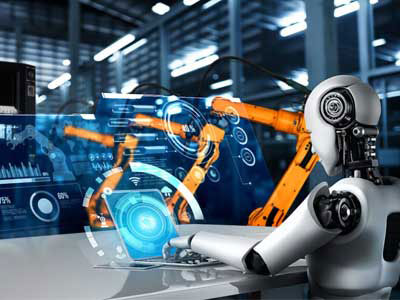Key Takeaway
The most advanced robot today is Ameca. Ameca is a humanoid robot known for its lifelike facial expressions and advanced communication skills. Created by Engineered Arts, it can interact with humans in a realistic manner, making it an excellent tool for studying human-robot interactions. Ameca’s design allows it to perform complex tasks and respond to a wide range of stimuli, making it a leader in robotics technology. This robot represents a significant step forward in creating machines that can seamlessly integrate into human environments.
Current Leading Robots
Today, the landscape of advanced robotics is dominated by several remarkable robots, each excelling in unique areas. Boston Dynamics’ Atlas is renowned for its human-like agility and mobility, capable of performing complex parkour moves. Meanwhile, Hanson Robotics’ Sophia is celebrated for its human-like appearance and social interactions, making it a prominent figure in AI and robotics conferences. Another noteworthy robot is ASIMO by Honda, designed for aiding in human tasks with advanced walking and running capabilities. These robots represent the forefront of robotics, showcasing extraordinary advancements in mobility, AI, and human-robot interaction.

Technological Features
The technological features of advanced robots like Atlas, Sophia, and ASIMO are truly groundbreaking. Atlas, for example, integrates advanced sensors, gyroscopes, and machine learning algorithms, allowing it to maintain balance and navigate complex terrains effortlessly. This robot can perform backflips, run, and jump with a level of precision that closely mimics human movement. On the other hand, Sophia uses cutting-edge AI algorithms to process visual data and generate natural language responses, enabling it to engage in meaningful conversations with humans. ASIMO is equipped with sophisticated sensors and actuators, which allow it to walk smoothly on uneven surfaces, climb stairs, and recognize faces and voices.
These technological advancements highlight the integration of AI, sensor technology, and mechanical engineering in modern robotics. Atlas, Sophia, and ASIMO demonstrate how far we’ve come in creating robots that not only move and interact like humans but also assist in various real-world applications. The fusion of advanced sensors, AI, and mechanical systems in these robots showcases the potential for future developments in the field, paving the way for even more sophisticated and capable machines.
Applications and Capabilities
The applications and capabilities of robots like Atlas, Sophia, and ASIMO are vast and varied, reflecting their advanced technological features. Atlas is primarily used for research and development in advanced robotics, contributing to the creation of robots capable of assisting in disaster recovery and hazardous environments. Its ability to navigate and perform complex movements makes it ideal for tasks that require precision and agility. Sophia, with its AI-driven conversational abilities, finds applications in customer service, education, and healthcare. It can interact with people, provide valuable information, and even offer companionship.
ASIMO, known for its smooth mobility and human-like movement, is often used in demonstrations and educational contexts. It showcases the potential of robotics in assisting with daily tasks and providing mobility support for the elderly and disabled. These robots are not only technological marvels but also practical tools that enhance human capabilities and safety. Their applications in various industries demonstrate how robots can make our lives easier and safer by taking on tasks that are either too dangerous or too complex for humans.
Innovations and Breakthroughs
Recent innovations and breakthroughs in robotics have significantly expanded the capabilities of robots like Atlas, Sophia, and ASIMO. Atlas has recently showcased complex gymnastic routines, indicating remarkable progress in robotic agility and control. This level of physical prowess in a robot opens up new possibilities for their use in environments where human-like movement is essential. Sophia has undergone several upgrades, enhancing its facial expressions and conversational abilities. These improvements make interactions with Sophia more natural and engaging, increasing its effectiveness in roles that require human interaction.
ASIMO has also seen significant advancements, particularly in its autonomy. With better battery life and enhanced environmental awareness, ASIMO can operate more efficiently and for longer periods. These breakthroughs are driven by continuous advancements in AI, machine learning, and sensor technology, pushing the boundaries of what robots can achieve. As these technologies evolve, we can expect robots to become even more capable and versatile, ready to take on a wider range of tasks and challenges.
Future Developments
The future of advanced robotics is incredibly promising, with ongoing developments aimed at increasing the autonomy, intelligence, and versatility of robots. Future robots are expected to integrate seamlessly into everyday life, assisting in homes, hospitals, and workplaces. Innovations in AI will enable robots to learn and adapt to new tasks more efficiently, making them even more useful in various settings. Developments in material science and energy storage will enhance their durability and operational time, allowing them to work longer and more reliably.
Additionally, collaborative robots, or cobots, are set to become more prevalent. These robots are designed to work alongside humans, assisting in tasks that require a combination of human intelligence and robotic precision. The advancements in this field will not only improve productivity and efficiency but also enhance the quality of life by taking on more complex and challenging tasks. As robots continue to evolve, they will play an increasingly important role in our daily lives, making them indispensable tools in various industries and applications.
Conclusion
Advanced robotics today represents a transformative leap in industrial automation, integrating AI, machine learning, and sophisticated sensors. These robots streamline operations with precision and efficiency, from assembly lines to complex manufacturing processes. They promise enhanced productivity, reduced errors, and safer work environments. As technology evolves, robotics continue to redefine industry standards, offering scalable solutions that meet diverse industrial needs while paving the way for future innovations in automation and beyond.
